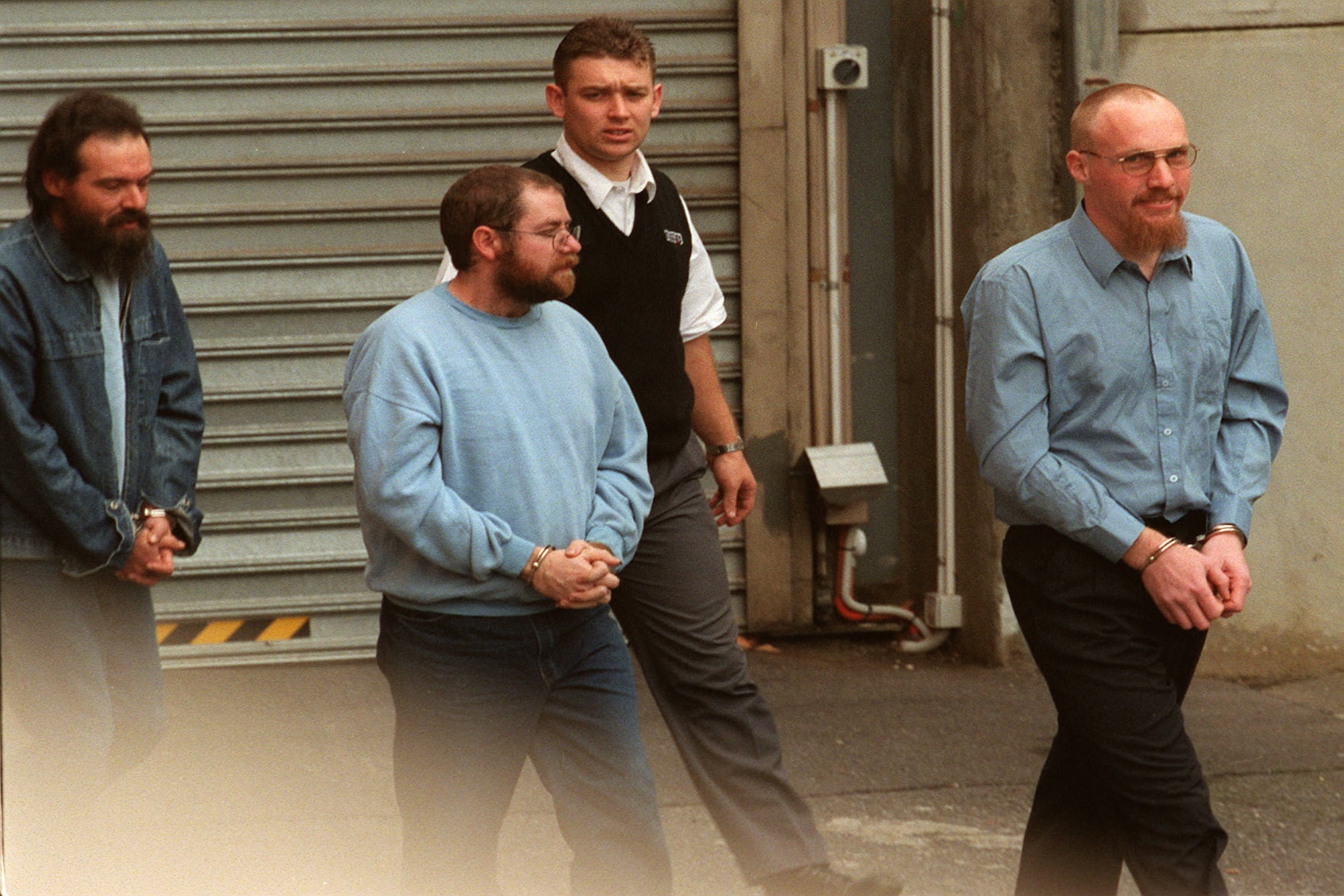Create a free profile to get unlimited access to exclusive videos, breaking news, sweepstakes, and more!
The True Crime Story Behind 'Snowtown,' Australia's Most Brutal Horror Movie
How faithful is the 2011 film to the true crimes that occurred in the town of the same name?

After the debut of the 2011 film "Snowtown," critics generally agreed that the film was a masterpiece of cinema, although almost completely unpalatable to casual audiences. Reviewers described the movie as both "unwatchably violent" and "an uncommonly powerful viewing experience," according to Rotten Tomatoes. Depicting the true crimes of John Bunting, Robert Wagner, and James Vlassakis, the directorial debut from Justin Kurzel is a dazzlingly brutal horror film. But how accurate is the movie to the actual killings committed by the Australian trio?
Over the course of seven years, John Justin Bunting, a former slaughterhouse worker, recruited local youths in the Adelaide area of Australia. Bunting claimed to have been hunting pedophiles and homosexuals for the betterment of society. Documents obtained in a Radford University study on the murders show that in his childhood, Bunting had been sexually and physically abused by a friend's older brother. His proclivity for violence led him to enact his own bloody form of vigilante justice.
Bunting enlisted the help of Wagner and Vlassakis in the killing of at least 12 peoples between August 1992 and May 1999, including Vlassakis' half-brother. The group tortured and dismembered many of their victims and attempted to steal from their bank accounts. Many of the bodies were dumped in barrels in an abandoned bank outside of Snowtown, according to The Age, an Australian news organization.
The trial of Bunting and Wagner lasted almost a year, the longest trial in the history of South Australia.
Bunting was ultimately sentenced to 11 consecutive terms of life imprisonment without the possibility of release on parole. Wagner was sentenced to 10 consecutive terms under the same conditions. Vlassakis was sentenced in 2002 to a minimum of 26 years.
"Pedophiles were doing terrible things to children. The authorities didn't do anything about it. I decided to take action. I took that action. Thank you," Wagner told the courts at his trial, according to Adelaide Now, another Australian news organization.
The families of the victims generally agreed that the killers were in no way sorry for their crimes.
"I have been looking at them for the past two-and-a-half to three months and I feel there is no remorse in them, none at all," said Marcus Johnson, the father of the last Snowtown victim, according to The Age.
Many of the details of the murders were kept from public view until 2011 when a number of suppression orders were lifted by court order at the request of "Snowtown" filmmakers, according to The Sydney Morning Herald, another Australian news organization.
Kurzel's interpretation of the events of the murders are semi-sympathetic to the killers and show how extreme poverty and social disenfranchisement led to such heinous violence. In the film, Bunting is portrayed as a hideous father-figure to the abused Wagner and Vlassakis.
The extent to which the story is a poetic interpolation of what actually occurred is debatable.
"I only knew about as much as what was being reported—which was this freak show, this kind of bodies-in-the-barrels, macabre story," Kurzel told Interview Magazine in 2011 "Eleven people tortured and murdered and chopped up ... I didn’t really know much more about it than that. So, when I read this script [by Shaun Grant], this point of view of this kid involved and this kind of corruption of innocence and this incredible relationship between a father-figure-slash-serial-killer and a young man was pretty compelling stuff. I saw a perspective in the story that I hadn’t seen before. ... [We were] reinvestigating these events in a much more human way."
Kurzel added that he attempted to stay faithful to true accounts of the crimes.
"It was all pretty much what was available to us in the books and the transcripts and our own interviews," he said. "There were maybe some moments in the characterization where we were taking an imaginative interpretation, but they all felt very consistent to what we knew of the real people. It’s an interpretation. Any film is—even documentaries on real events, they’re interpretations. We made sure and were very adamant that we weren’t going to fictionalize any of the actual events and the victims and the murders. We needed to have an integrity that felt very true and honest."
The film wound up attracting dark tourism in the Snowtown area, boosting the territory's economy temporarily, according to Adelaide Now. The town later considered changing its name to "Rosetown" to fight the stigma associated with the killings, according to The Age.
Although Kurzel's film career would take a more commercial turn in 2016 with the release of his film "Assassin's Creed," based on the video game of the same name, his meditation of the nature of cruelty remains an underappreciated and cerebral genre classic — although it's certainly hard to sit through. While other true crime films are often interested in sensationalist depictions of illegality, Kurzel instead examined the tragic psychopathology behind some of his country's most brutal killings.
[Photo: Joe Wagner (right) and John Justin Bunting (center) by Newspix / Getty Images]


